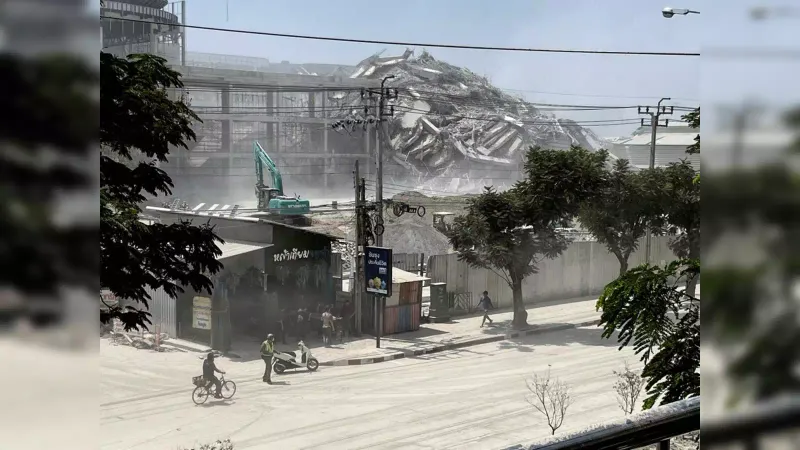A powerful earthquake struck central Myanmar on Friday, killing at least 144 people and shaking communities across Southeast Asia. The 7.7 magnitude quake hit at 12:50 p.m., its epicenter just 17 kilometers from Mandalay, a city steeped in history. With a depth of only 10 kilometers, the jolt was fierce, followed by a 6.4 magnitude aftershock that deepened the chaos. Its reach stretched over 600 miles, rocking Bangkok and sending tremors as far as Vietnam and India. In Mandalay, the damage was stark. Homes crumbled, the city’s iconic clock tower collapsed, and part of the Mandalay Palace took a hit. Further south in Taungoo, a mosque fell during midday prayers, leaving three dead, according to witnesses. Myanmar’s military government—already stretched thin by years of civil conflict—reported 730 injured and issued a rare call for international aid. Roads split open, and a 90-year-old bridge in Sagaing plunged into the Irrawaddy River, cutting off key transport routes. With rebels holding swaths of territory and communications patchy, the full extent of the devastation remains unclear.
Thailand felt the shockwaves too. In Bangkok, a 33-story skyscraper under construction near Chatuchak Market buckled, killing nine workers and trapping dozens more. Rescue teams descended with dogs and drones, digging through dusk to find survivors. Prime Minister Paetongtarn Shinawatra declared a city-wide emergency, halting the MRT and BTS rail systems. Traffic snarled as bridges swayed and buildings emptied.
“We’re doing everything we can,” she said, voice steady but tired, after rushing back from Phuket.
The quake’s reach was staggering. In China’s Yunnan province, near the Myanmar border, Ruili residents fled as buildings trembled—some injured by falling debris. In Hanoi, high-rises swayed. In Cambodia, Bangladesh, and parts of India, residents felt the distant rumble. Seismologists pinned the quake to the Sagaing Fault, a volatile line slicing through Myanmar.
“This fault’s been building tension for years,” said Shengji Wei, a researcher at Singapore’s Earth Observatory. “When it goes, it doesn’t hold back.”
Bangkok’s 17 million residents were caught off guard. Paul Vincent, a British tourist, watched water spill from rooftop pools as the ground rolled.
“It felt like the end,” he said, still pale hours later.
Locals poured into open spaces—parents with kids, office workers with laptops—unaccustomed to quakes in a city built for floods, not tremors. The Stock Exchange closed early, and Finance Minister Pichai Chunhavajira downplayed broader economic fallout, though few looked convinced. For Myanmar, the quake piles onto an already catastrophic situation. Civil war has displaced millions, and now shattered infrastructure worsens the crisis. In Naypyidaw, pagodas toppled and roads split. Aid groups warned of urgent shortages—food, shelter, medical care.
“It’s layer upon layer of hardship,” said Tom Andrew, a UN official in Yangon, his voice heavy with frustration.
As night fell, the region braced for more. Aftershocks rattled nerves. In Bangkok, rescuers pulled a survivor from the wreckage—a flicker of hope in an otherwise grim day. In Myanmar, families camped in the open, surrounded by broken homes and fading hope.

